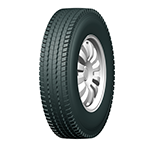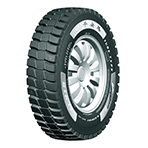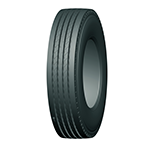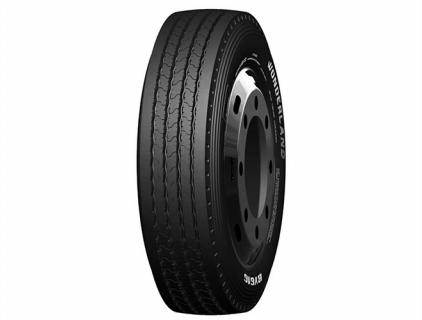
Today we will teach you a few tips on self-checking tires.
Piercing: Have your car tires been pierced? If so, how long ago was it? In fact, for a car that has been repaired for a long time, even if there is no problem with it at present, its ability to withstand extreme loads will not be as good as before. In addition, if there are already more than 3 holes on the same tire, it is recommended that you replace the tire as soon as possible.
Bulge: When a vehicle passes through pits, obstacles and road edges at high speed, the tires will locally deform severely under the huge impact force, and the internal pressure will increase instantaneously. The direct result of this is the bulge of the tires. Tires that are already bulging must be replaced immediately, otherwise there will be a risk of puncture.
Pattern: Normally, the tires of a family car in normal use can be replaced every 60,000 kilometers or two years, but tires with severe pattern wear should be replaced in advance. Today's inspection shops have pattern wear scales, and car owners can buy one to check the pattern wear of their tires in time. In addition, increased tread cracks are also a sign of serious tire aging. Normally, car owners can spray some tire protection wax reasonably, and in addition, try not to press corrosive liquids when driving.
Air pressure: For front-wheel drive vehicles, the engine, gearbox and other important driving components are pressed at the front end, so the front tires sometimes look flat. If the visual inspection is not accurate, you must use a special tire pressure gauge to check whether the air pressure is normal.
Stones: Some car owners often hear their cars make noises when driving, but there is no system failure when driving. At this time, you need to check whether there are gravels stuck in the tire pattern. In fact, you only need to take the time to dig out the stone particles in the tread texture with a key.
Spare tire: If you want the spare tire to play a real emergency effect, you should usually pay attention to its maintenance. First of all, check the pressure of the spare tire from time to time; in addition, pay special attention to the oil erosion of the spare tire. The tire is a rubber product and should not be corroded by various oils. The tires will bulge soon after being tainted with oil, which will greatly reduce the service life of the tires. Finally, the life of the spare tire is around 4 years ago. Many car owners mistakenly believe that the spare tire is always new if it is not used. After 4 years, the spare tire must be replaced even if it has not been used once, or the spare tire will become a waste tire.
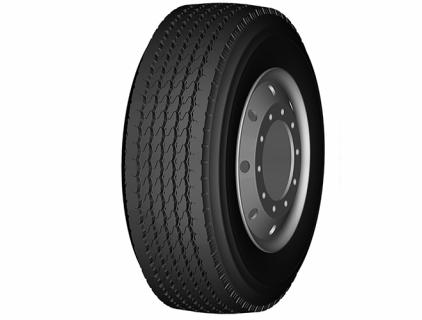
What are the functions of green tires:
First of all: it can ensure to reduce fuel consumption and reduce exhaust gas emissions.
Second: It can prevent vibration and reduce noise pollution to the environment.
Finally: It can replace the tires that need to be studded or chained for winter driving in some areas to prevent the tires from destroying the road and prevent dust.
How do tires ensure energy saving and environmental protection:
The vehicle will have resistance during driving, and the tire roll assist can account for 18% to 30% of the total assist. Therefore, reducing the tire roll assist can reduce fuel consumption by 3% to 3%. About 8%, and then achieve the purpose of reducing exhaust emissions and saving fuel.
Ways to reduce tire roll resistance:
First of all: reducing the weight of the tire, using a smaller component thickness for the inner material of the tire to achieve the same quality is the fastest and most effective way to reduce the tire roll resistance.
Secondly: to reduce the energy loss (hysteresis loss) of the tire material, the tire achieves a smaller hysteresis loss through the use of improved polyester cord varieties.
The above two methods both require manufacturers to control the production process and adopt better machines.
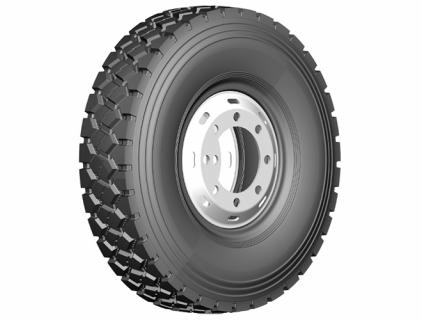
Just like a human foot, a tire has a vital function. It not only has to bear a ton of load, but it also has to deal with complex road conditions. It is one of the main guarantees of safety, so it needs to be carefully taken care of, not only to check it frequently, but also to know how to replace it by itself in an emergency.
Special attention: the side of the tire is the most vulnerable
As far as tires are concerned, a puncture is the most serious safety risk. How to cause a puncture depends on the structure of the tire. It can be seen from the tire polishing diagram that the front of the tire is cross-bonded layer by layer of steel wire and rubber, which is relatively firm; the structure of the side of the tire is different from that of the front. Adhesion is just a thin line of adhesion, only a thicker steel wire is inside, which plays the function of supporting the tire.
Because of the special structure of the tire, if the side of the tire is damaged, it is not easy to repair, and in most cases, it can only be replaced with a new tire. If it will be repaired, it is very easy to cause a puncture when pressure is applied. Because the connection between the front and side of the tire is very thin, in most cases, the puncture is in this position. When the wheels are running at a high speed, the temperature will be too high, and the tire pressure will affect the temperature changes. The tire pressure is insufficient and the speed is fast, causing the temperature to be too high, and it is very easy to blow the tire.
Tell everyone a few ways to use tires:
1. Inspect the tires. If the puncture is on the side of the tire and the degree is serious and cannot be repaired, you need to change a new tire.
2. You cannot change the size of the tires at will, so you should choose a tire that matches your own car.
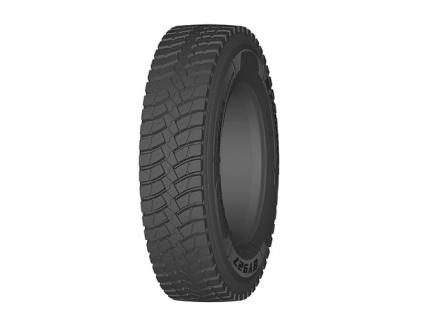
I believe many people know that car tires will slowly age after running for a period of time. As the driving distance increases, the tire groove shape becomes shallower, the grip is weakened, the braking distance increases, and safety decreases. In addition, when the tread is flat, the inner tube of the tire decreases, which not only increases the braking distance, but also increases the braking resistance. If the tread is uneven, it will cause idling, increase driving resistance, and naturally increase fuel consumption, so it is very important to replace the fetus in time.
How long is the tire replacement cycle? Usually the auto repair shop will tell you that the tires should be replaced in about three years. In fact, if there are no such problems in normal driving, there will be no problems in five years. However, the time period for tire replacement is related to many factors and must be specifically analyzed:
1. Vehicle operating frequency
For family cars, except for occasional work and weekend outings, they are rarely used, and the tire replacement time period can be extended appropriately and replaced every five years.
For commercial vehicles, if you often go out for driving, you must shorten the tire replacement period, usually about 4 years.
2. The use environment is also related.
For example, a car is parked outdoors for a long time in the sun, often in wind and rain, and tires are aging quickly. If the car is often driven in saline-alkali land, the salt-alkali corrosion of the tires will be more serious, so the cycle of replacing tires should be shortened. The tires are usually replaced in about three years.
3. Driver's driving habits
Some drivers are used to accelerating or braking quickly while driving, and some drivers will step on the accelerator on the spot, and the tires will emit black smoke on the spot. These bad habits are harmful to the tires. The tire change cycle should be shortened accordingly. If you play drifting, the tires will burn more severely, and you need to replace the tires in less than a year.
If there are the following situations, even if it hasn't been a year, it should be replaced in time.
1. Bulge 2. Cracks 3. In a short period of time, tires have been punctured continuously, repaired or punctured by larger hard objects.
These types of tires have the possibility of puncturing at any time. If the tires suddenly puncture, it is very dangerous and must be replaced immediately.
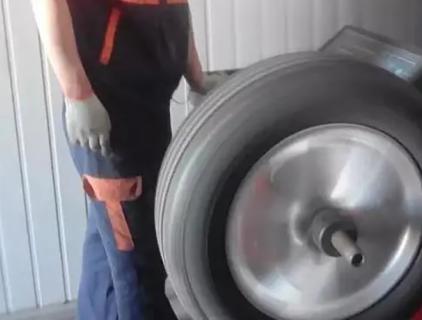
What is wheel balance?
By adding counterweight to correct the tire and stick a balance weight on the edge of the wheel hub, we call it wheel dynamic balance.
When performing dynamic balancing, a dynamic balancer will be used to display the data. The larger the value, the more unbalanced the wheel. When the value is 0, it means that the wheel has reached the best dynamic balance.
Why do dynamic balances?
The wheel is composed of tires and rims, but due to various reasons, the mass distribution of the entire part cannot be very uniform. When driving at high speed, the centrifugal force is unbalanced, which endangers driving safety.
When is dynamic balancing performed?
1. Change the tire status, such as replacing a new tire, or patching the tire when repairing a tire;
2. Change the status of the rim, such as replacing the rim with a new one, or the rim is knocked out of shape;
3. The relative position of the tire and the rim has changed, such as when changing a tire, repairing a tire, changing a tire or adding a tire pressure monitor, the tire must be removed and reinstalled, but the position has changed;
4. The original balance weight falls off;
5. Due to other comprehensive reasons, the original dynamic balance fails, and the wheels shake when driving at high speed;
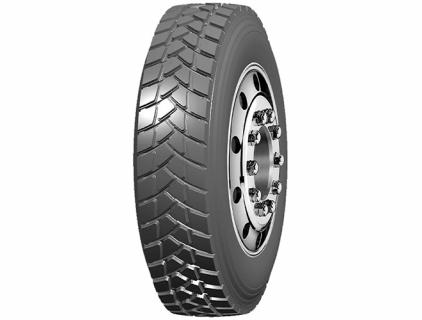
Tires are the core to ensure the safe operation of vehicles. Many people are unique in buying a car, but they don’t know how to choose suitable tires. In fact, it’s easy to choose a tire. You can see which one is your choice by looking at the pattern.
The tire pattern affects the characteristics of the tire. There are several types of patterns that are more common on the market today: symmetrical/asymmetrical patterns, and horizontal/longitudinal patterns. Among them, the symmetrical pattern mainly focuses on quiet and comfortable performance, and the asymmetrical pattern is the sporty characteristic; the transverse pattern improves the braking characteristics of the tire, and the longitudinal pattern helps the tire to reduce noise, drag, heat and drain.
Everyone has understood that the asymmetrical pattern can improve the sporty characteristics of the tire, increase the contact area between the tire and the road surface, and improve its grip. The asymmetrical pattern design is selected, which greatly improves the cornering rigidity of the tread, enabling the tires to grip the ground stronger and more resistant to wear.
In addition to the delicate design of the pattern, the tread pattern stiffness analysis technology is also used to improve the rapid response characteristics of the tread. The cap layer is made of high-rigidity aramid material for multiple windings, so that the rear tire will not It will skid, especially the improved bead design can also reduce the risk of tire laps, and further enhance the tire's sports characteristics, allowing the driver to control the tires flexibly, making quick turns more stable.
The transverse pattern can increase the transverse rigidity of the tire, increase the friction force, and enhance the braking function of the tire. The 3D bionic blade coupling groove design increases the tire’s ground contact area. The sharp pattern groove allows the tire to pierce the water film instantly when driving over the watery road, improving the tire’s wet grip and presenting a quick and stable wet start and control. Dynamic characteristics.
The characteristics of the tires are not only affected by the pattern type, but also change due to the order of the pattern blocks. According to the improvement of the pattern spacing and the chaotic arrangement of multiple rows, the tire noise can be effectively reduced, and in addition to achieving maneuverability and grip, it can also keep the cabin environment quiet and comfortable.
There are many types of tire patterns, but they all have a clear division of labor. The combination of different types of patterns can make up for the lack of tire characteristics to a certain extent. When choosing a tire, recognize the pattern on the tire and choose the one that is suitable for you to ensure that the tire can conform to your driving habits.
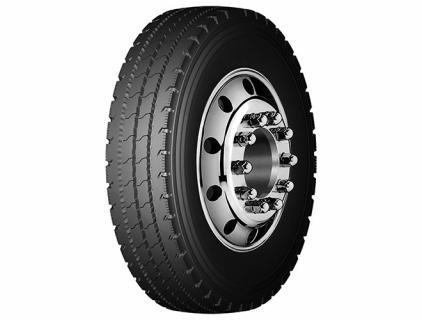
The journey of a thousand miles begins with a single step, and the importance of tires to the vehicle is obvious. Choosing good tires will enhance driving maneuverability and improve riding comfort to a certain extent. But in fact, the choice of tires is also said, and many riders do not understand this common sense, resulting in the process of buying tires will only be generalized and even be severely "slaughtered." Therefore, now I will give you a brief explanation of some small knowledge about tires.
Just as vehicles have grade classification standards, tires also have consistent quality grading mandatory standards. And this mandatory standard for quality grading is called the 3T index value.
The 3T index value includes the tire wear resistance index value (TREADWEAR), traction characteristics (TRACTION) and temperature index value (TEMPERATURE). For example, in terms of traction characteristics, it can use four levels of AA, A, B, and C to distinguish the traction characteristics of the tires. If the traction characteristic is AA grade, it means that the tire has strong grip. On the other hand, if the traction characteristic is C grade, the grip is extremely weak. For example, the tire temperature index value is evaluated by three grades of A, B, and C, and the temperature index value is A. Grade indicates that the tire has excellent high temperature resistance, while a temperature index value of C indicates that the tire has poor high temperature resistance.
Unlike the other two index values, the wear resistance index value of tires is not as high as possible. If the tires have a high level of wear resistance, the comfort of driving the car will be greatly reduced. Because the wear-resistant tires will be harder and the cushioning performance of the tires is not very outstanding. Under normal circumstances, especially for family cars, it is more appropriate to choose a tire wear resistance index value of 280-320.
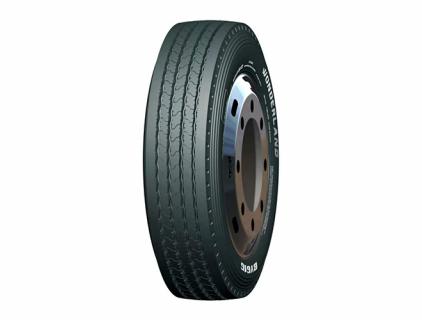
In fact, every driver in the process of buying a car or a garage, the maintenance staff will provide some suggestions. Especially for the suggestion that the tire components should be replaced on time, then, how often should the tires be replaced? In fact, there is no fixed time limit for the frequency and time of tire replacement. Instead, it depends on the actual usage of the tire. Generally, you can observe whether the damaged mark is exposed, how long the manufacturing date is, and how far the mileage is. And whether the tire has experienced damage and other aspects to be measured.
How often should the tires be replaced? Damage identification of side tires is very important
At the beginning of the design of the tire, there is an identification mark for its replacement cycle. Therefore, there is a simple and convenient way to easily identify whether a tire is to be replaced, and that is to observe the damage indicator of the tire.
When looking at the tire, it is very easy to see that there are raised squares in the pattern grooves, which are the tire wear indicators. If you can see a small spot on the raised square, it means that the tire does not need to be replaced; if the small spot is no longer found, it means that the depth of the tread groove is less than 1.6 mm, and you must consider replacing it; Even the raised squares are not found, which means that the tread depth is far below 1.6 mm. Be sure to replace the tires immediately, otherwise there is a serious safety risk.
How often should the tires be replaced? Keep in mind the best use time limit
The general auto shop will let you replace the tires in about three years, but there are also car repair shop personnel who indicate that the replacement will be fine within five years. This is because everyone's driving style, mileage, and road conditions are different, so the degree of damage to the tires is different, so the replacement cycle also changes. However, because tires are made of rubber, and rubber products will inevitably age, it is recommended that tires be replaced within five years from the date of manufacture.
How often should the tires be replaced? Judge tire life by mileage
The longer the mileage of the vehicle, the greater the tire wear and the shorter the time to replace the tire. This is easier to understand. Under normal driving conditions, the service life of tires is between 40,000 and 60,000 kilometers, and they must be replaced if they exceed them. But this is also measured on a smooth paved road. If the vehicle is driving on rugged mountain roads or bad terrain for a long time, then it is necessary to consider replacing the tires within a shorter mileage. However, in daily life, it is difficult to ensure that the vehicle travels such a long distance on the same road condition, so the actual situation still depends on the actual damage of the tires.
How often should the tires be replaced? Tire damage affects replacement time
If the tires are damaged, the tire replacement time can no longer be judged based on the above statement. Instead, the tires can be flexibly changed according to the degree of tire damage. If the tire tread, shoulder, sidewall, etc. are scratched, bulged, cracked, deformed, or pierced into steel nails, it needs to be replaced on time. Otherwise, it is very easy for the tire to blow out and cause road traffic accidents. Drivers pose a risk.
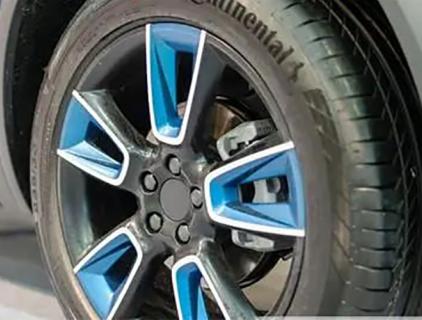
Summer is a frequent occurrence of tire blowouts, so many drivers are trying to extend the use of tires, and replacing run-flat tires is one of the methods.
1. What is a run-flat tire
The scientific name of the run-flat tire is "Run Flat Tire", which is abbreviated as RSC in English. The explosion-proof tire consists of a tire, a common inner tube, a spare inner tube, a steel rim, a gas generator (or air storage cavity), a pressure sensor and a control unit. All tires with the RSC mark are run-flat tires.
2. Does the run-flat tire really not burst?
In fact, it’s not that the tire will blow out, but the probability of a tire blowout is much smaller. Even if the tire is blown out, the flat tire can maintain its original shape and continue to drive. When the air pressure is increased, the driver can be pressed down and deviated to one side, so the driver can control it better. This solves the problem of uncontrollable tire burst when the vehicle is driving at high speed for a moment, and the risk is greatly reduced.
Third, the advantages and disadvantages of run-flat tires
1. Advantages
Explosion-proof tires have thicker sidewalls, and some tough components are added in the manufacturing process. This also makes the wear-resistant tires more excellent, so its service life concept is longer than ordinary tires. And it has a stronger safety factor than ordinary tires. There is no need to attach a spare tire. After detecting a leak, you only need to drive safely to the car repair shop at a slow speed.
2. Disadvantages
The total weight of run-flat tires is large. If the vehicle is equipped with four run-flat tires, it is equivalent to the total weight of one more person; due to the reinforced design of the sidewall, the comfort of the tires will be worse than that of ordinary tires; the repair of run-flat tires is very cumbersome In particular, it is very difficult to remove the tire from the wheel hub. Therefore, at this stage, all the run-flat tires are directly replaced after being punctured, and the use cost is increased.

Tires have long been an area of concern to many drivers. Nowadays, many drivers are gradually discussing the width of the tire. The width of the tire refers to the total width of the tire tread.
The difference between wide and narrow tires
Suitable car models are different: wide tires are usually used for high and mid-range car models, while narrow tires are more commonly used for normal car models.
Suitable wheels are different: wide tires are installed on large wheels, while narrow tires are usually installed on small wheels.
The sidewall height is different: narrow tires are thicker, while wide tires are relatively thinner.
The price is different: wide tires are more expensive than narrow tires.
Compared with narrow wheels, wide cars have more treads, more contact area with the road, and more friction, so the grip will be stronger, but the fuel consumption and tire noise will be more;
Relatively speaking, narrow wheels are more economical and practical than wide wheels, and the price is relatively more cost-effective. Because of the small ground contact area, the friction is smaller, and the vehicle speed-up function will be better, resulting in less tire noise, and driving It's lighter and more fuel-efficient. However, the grip of the narrow wheels is slightly weaker, and it is not as good as the wide tires in terms of braking function and maneuverability.
Widened tires do more harm than good to the car
Under normal circumstances, the widening of the tires will make the chassis appear lower, and the overall grade of the vehicle will be improved. Many drivers will transform the original narrow wheels into wide wheels. However, tire widening will have a certain impact on the vehicle. While tire widening improves maneuverability and grip, it also increases resistance and fuel consumption to a certain extent, which will make the orientation heavier and improve steering. radius.
In addition, the widening of the tires requires an increase in the size of the wheel hub, which is an illegal modification, which cannot pass the annual review. Therefore, many factors need to be considered for tire widening, and it is recommended to make reasonable modifications after weighing the pros and cons.

Today we will teach you a few tips on self-checking tires.
Piercing: Have your car tires been pierced? If so, how long ago was it? In fact, for a car that has been repaired for a long time, even if there is no problem with it at present, its ability to withstand extreme loads will not be as good as before. In addition, if there are already more than 3 holes on the same tire, it is recommended that you replace the tire as soon as possible.
Bulge: When a vehicle passes through pits, obstacles and road edges at high speed, the tires will locally deform severely under the huge impact force, and the internal pressure will increase instantaneously. The direct result of this is the bulge of the tires. Tires that are already bulging must be replaced immediately, otherwise there will be a risk of puncture.
Pattern: Normally, the tires of a family car in normal use can be replaced every 60,000 kilometers or two years, but tires with severe pattern wear should be replaced in advance. Today's inspection shops have pattern wear scales, and car owners can buy one to check the pattern wear of their tires in time. In addition, increased tread cracks are also a sign of serious tire aging. Normally, car owners can spray some tire protection wax reasonably, and in addition, try not to press corrosive liquids when driving.
Air pressure: For front-wheel drive vehicles, the engine, gearbox and other important driving components are pressed at the front end, so the front tires sometimes look flat. If the visual inspection is not accurate, you must use a special tire pressure gauge to check whether the air pressure is normal.
Stones: Some car owners often hear their cars make noises when driving, but there is no system failure when driving. At this time, you need to check whether there are gravels stuck in the tire pattern. In fact, you only need to take the time to dig out the stone particles in the tread texture with a key.
Spare tire: If you want the spare tire to play a real emergency effect, you should usually pay attention to its maintenance. First of all, check the pressure of the spare tire from time to time; in addition, pay special attention to the oil erosion of the spare tire. The tire is a rubber product and should not be corroded by various oils. The tires will bulge soon after being tainted with oil, which will greatly reduce the service life of the tires. Finally, the life of the spare tire is around 4 years ago. Many car owners mistakenly believe that the spare tire is always new if it is not used. After 4 years, the spare tire must be replaced even if it has not been used once, or the spare tire will become a waste tire.

What are the functions of green tires:
First of all: it can ensure to reduce fuel consumption and reduce exhaust gas emissions.
Second: It can prevent vibration and reduce noise pollution to the environment.
Finally: It can replace the tires that need to be studded or chained for winter driving in some areas to prevent the tires from destroying the road and prevent dust.
How do tires ensure energy saving and environmental protection:
The vehicle will have resistance during driving, and the tire roll assist can account for 18% to 30% of the total assist. Therefore, reducing the tire roll assist can reduce fuel consumption by 3% to 3%. About 8%, and then achieve the purpose of reducing exhaust emissions and saving fuel.
Ways to reduce tire roll resistance:
First of all: reducing the weight of the tire, using a smaller component thickness for the inner material of the tire to achieve the same quality is the fastest and most effective way to reduce the tire roll resistance.
Secondly: to reduce the energy loss (hysteresis loss) of the tire material, the tire achieves a smaller hysteresis loss through the use of improved polyester cord varieties.
The above two methods both require manufacturers to control the production process and adopt better machines.

Just like a human foot, a tire has a vital function. It not only has to bear a ton of load, but it also has to deal with complex road conditions. It is one of the main guarantees of safety, so it needs to be carefully taken care of, not only to check it frequently, but also to know how to replace it by itself in an emergency.
Special attention: the side of the tire is the most vulnerable
As far as tires are concerned, a puncture is the most serious safety risk. How to cause a puncture depends on the structure of the tire. It can be seen from the tire polishing diagram that the front of the tire is cross-bonded layer by layer of steel wire and rubber, which is relatively firm; the structure of the side of the tire is different from that of the front. Adhesion is just a thin line of adhesion, only a thicker steel wire is inside, which plays the function of supporting the tire.
Because of the special structure of the tire, if the side of the tire is damaged, it is not easy to repair, and in most cases, it can only be replaced with a new tire. If it will be repaired, it is very easy to cause a puncture when pressure is applied. Because the connection between the front and side of the tire is very thin, in most cases, the puncture is in this position. When the wheels are running at a high speed, the temperature will be too high, and the tire pressure will affect the temperature changes. The tire pressure is insufficient and the speed is fast, causing the temperature to be too high, and it is very easy to blow the tire.
Tell everyone a few ways to use tires:
1. Inspect the tires. If the puncture is on the side of the tire and the degree is serious and cannot be repaired, you need to change a new tire.
2. You cannot change the size of the tires at will, so you should choose a tire that matches your own car.

I believe many people know that car tires will slowly age after running for a period of time. As the driving distance increases, the tire groove shape becomes shallower, the grip is weakened, the braking distance increases, and safety decreases. In addition, when the tread is flat, the inner tube of the tire decreases, which not only increases the braking distance, but also increases the braking resistance. If the tread is uneven, it will cause idling, increase driving resistance, and naturally increase fuel consumption, so it is very important to replace the fetus in time.
How long is the tire replacement cycle? Usually the auto repair shop will tell you that the tires should be replaced in about three years. In fact, if there are no such problems in normal driving, there will be no problems in five years. However, the time period for tire replacement is related to many factors and must be specifically analyzed:
1. Vehicle operating frequency
For family cars, except for occasional work and weekend outings, they are rarely used, and the tire replacement time period can be extended appropriately and replaced every five years.
For commercial vehicles, if you often go out for driving, you must shorten the tire replacement period, usually about 4 years.
2. The use environment is also related.
For example, a car is parked outdoors for a long time in the sun, often in wind and rain, and tires are aging quickly. If the car is often driven in saline-alkali land, the salt-alkali corrosion of the tires will be more serious, so the cycle of replacing tires should be shortened. The tires are usually replaced in about three years.
3. Driver's driving habits
Some drivers are used to accelerating or braking quickly while driving, and some drivers will step on the accelerator on the spot, and the tires will emit black smoke on the spot. These bad habits are harmful to the tires. The tire change cycle should be shortened accordingly. If you play drifting, the tires will burn more severely, and you need to replace the tires in less than a year.
If there are the following situations, even if it hasn't been a year, it should be replaced in time.
1. Bulge 2. Cracks 3. In a short period of time, tires have been punctured continuously, repaired or punctured by larger hard objects.
These types of tires have the possibility of puncturing at any time. If the tires suddenly puncture, it is very dangerous and must be replaced immediately.

What is wheel balance?
By adding counterweight to correct the tire and stick a balance weight on the edge of the wheel hub, we call it wheel dynamic balance.
When performing dynamic balancing, a dynamic balancer will be used to display the data. The larger the value, the more unbalanced the wheel. When the value is 0, it means that the wheel has reached the best dynamic balance.
Why do dynamic balances?
The wheel is composed of tires and rims, but due to various reasons, the mass distribution of the entire part cannot be very uniform. When driving at high speed, the centrifugal force is unbalanced, which endangers driving safety.
When is dynamic balancing performed?
1. Change the tire status, such as replacing a new tire, or patching the tire when repairing a tire;
2. Change the status of the rim, such as replacing the rim with a new one, or the rim is knocked out of shape;
3. The relative position of the tire and the rim has changed, such as when changing a tire, repairing a tire, changing a tire or adding a tire pressure monitor, the tire must be removed and reinstalled, but the position has changed;
4. The original balance weight falls off;
5. Due to other comprehensive reasons, the original dynamic balance fails, and the wheels shake when driving at high speed;

Tires are the core to ensure the safe operation of vehicles. Many people are unique in buying a car, but they don’t know how to choose suitable tires. In fact, it’s easy to choose a tire. You can see which one is your choice by looking at the pattern.
The tire pattern affects the characteristics of the tire. There are several types of patterns that are more common on the market today: symmetrical/asymmetrical patterns, and horizontal/longitudinal patterns. Among them, the symmetrical pattern mainly focuses on quiet and comfortable performance, and the asymmetrical pattern is the sporty characteristic; the transverse pattern improves the braking characteristics of the tire, and the longitudinal pattern helps the tire to reduce noise, drag, heat and drain.
Everyone has understood that the asymmetrical pattern can improve the sporty characteristics of the tire, increase the contact area between the tire and the road surface, and improve its grip. The asymmetrical pattern design is selected, which greatly improves the cornering rigidity of the tread, enabling the tires to grip the ground stronger and more resistant to wear.
In addition to the delicate design of the pattern, the tread pattern stiffness analysis technology is also used to improve the rapid response characteristics of the tread. The cap layer is made of high-rigidity aramid material for multiple windings, so that the rear tire will not It will skid, especially the improved bead design can also reduce the risk of tire laps, and further enhance the tire's sports characteristics, allowing the driver to control the tires flexibly, making quick turns more stable.
The transverse pattern can increase the transverse rigidity of the tire, increase the friction force, and enhance the braking function of the tire. The 3D bionic blade coupling groove design increases the tire’s ground contact area. The sharp pattern groove allows the tire to pierce the water film instantly when driving over the watery road, improving the tire’s wet grip and presenting a quick and stable wet start and control. Dynamic characteristics.
The characteristics of the tires are not only affected by the pattern type, but also change due to the order of the pattern blocks. According to the improvement of the pattern spacing and the chaotic arrangement of multiple rows, the tire noise can be effectively reduced, and in addition to achieving maneuverability and grip, it can also keep the cabin environment quiet and comfortable.
There are many types of tire patterns, but they all have a clear division of labor. The combination of different types of patterns can make up for the lack of tire characteristics to a certain extent. When choosing a tire, recognize the pattern on the tire and choose the one that is suitable for you to ensure that the tire can conform to your driving habits.

The journey of a thousand miles begins with a single step, and the importance of tires to the vehicle is obvious. Choosing good tires will enhance driving maneuverability and improve riding comfort to a certain extent. But in fact, the choice of tires is also said, and many riders do not understand this common sense, resulting in the process of buying tires will only be generalized and even be severely "slaughtered." Therefore, now I will give you a brief explanation of some small knowledge about tires.
Just as vehicles have grade classification standards, tires also have consistent quality grading mandatory standards. And this mandatory standard for quality grading is called the 3T index value.
The 3T index value includes the tire wear resistance index value (TREADWEAR), traction characteristics (TRACTION) and temperature index value (TEMPERATURE). For example, in terms of traction characteristics, it can use four levels of AA, A, B, and C to distinguish the traction characteristics of the tires. If the traction characteristic is AA grade, it means that the tire has strong grip. On the other hand, if the traction characteristic is C grade, the grip is extremely weak. For example, the tire temperature index value is evaluated by three grades of A, B, and C, and the temperature index value is A. Grade indicates that the tire has excellent high temperature resistance, while a temperature index value of C indicates that the tire has poor high temperature resistance.
Unlike the other two index values, the wear resistance index value of tires is not as high as possible. If the tires have a high level of wear resistance, the comfort of driving the car will be greatly reduced. Because the wear-resistant tires will be harder and the cushioning performance of the tires is not very outstanding. Under normal circumstances, especially for family cars, it is more appropriate to choose a tire wear resistance index value of 280-320.

In fact, every driver in the process of buying a car or a garage, the maintenance staff will provide some suggestions. Especially for the suggestion that the tire components should be replaced on time, then, how often should the tires be replaced? In fact, there is no fixed time limit for the frequency and time of tire replacement. Instead, it depends on the actual usage of the tire. Generally, you can observe whether the damaged mark is exposed, how long the manufacturing date is, and how far the mileage is. And whether the tire has experienced damage and other aspects to be measured.
How often should the tires be replaced? Damage identification of side tires is very important
At the beginning of the design of the tire, there is an identification mark for its replacement cycle. Therefore, there is a simple and convenient way to easily identify whether a tire is to be replaced, and that is to observe the damage indicator of the tire.
When looking at the tire, it is very easy to see that there are raised squares in the pattern grooves, which are the tire wear indicators. If you can see a small spot on the raised square, it means that the tire does not need to be replaced; if the small spot is no longer found, it means that the depth of the tread groove is less than 1.6 mm, and you must consider replacing it; Even the raised squares are not found, which means that the tread depth is far below 1.6 mm. Be sure to replace the tires immediately, otherwise there is a serious safety risk.
How often should the tires be replaced? Keep in mind the best use time limit
The general auto shop will let you replace the tires in about three years, but there are also car repair shop personnel who indicate that the replacement will be fine within five years. This is because everyone's driving style, mileage, and road conditions are different, so the degree of damage to the tires is different, so the replacement cycle also changes. However, because tires are made of rubber, and rubber products will inevitably age, it is recommended that tires be replaced within five years from the date of manufacture.
How often should the tires be replaced? Judge tire life by mileage
The longer the mileage of the vehicle, the greater the tire wear and the shorter the time to replace the tire. This is easier to understand. Under normal driving conditions, the service life of tires is between 40,000 and 60,000 kilometers, and they must be replaced if they exceed them. But this is also measured on a smooth paved road. If the vehicle is driving on rugged mountain roads or bad terrain for a long time, then it is necessary to consider replacing the tires within a shorter mileage. However, in daily life, it is difficult to ensure that the vehicle travels such a long distance on the same road condition, so the actual situation still depends on the actual damage of the tires.
How often should the tires be replaced? Tire damage affects replacement time
If the tires are damaged, the tire replacement time can no longer be judged based on the above statement. Instead, the tires can be flexibly changed according to the degree of tire damage. If the tire tread, shoulder, sidewall, etc. are scratched, bulged, cracked, deformed, or pierced into steel nails, it needs to be replaced on time. Otherwise, it is very easy for the tire to blow out and cause road traffic accidents. Drivers pose a risk.

Summer is a frequent occurrence of tire blowouts, so many drivers are trying to extend the use of tires, and replacing run-flat tires is one of the methods.
1. What is a run-flat tire
The scientific name of the run-flat tire is "Run Flat Tire", which is abbreviated as RSC in English. The explosion-proof tire consists of a tire, a common inner tube, a spare inner tube, a steel rim, a gas generator (or air storage cavity), a pressure sensor and a control unit. All tires with the RSC mark are run-flat tires.
2. Does the run-flat tire really not burst?
In fact, it’s not that the tire will blow out, but the probability of a tire blowout is much smaller. Even if the tire is blown out, the flat tire can maintain its original shape and continue to drive. When the air pressure is increased, the driver can be pressed down and deviated to one side, so the driver can control it better. This solves the problem of uncontrollable tire burst when the vehicle is driving at high speed for a moment, and the risk is greatly reduced.
Third, the advantages and disadvantages of run-flat tires
1. Advantages
Explosion-proof tires have thicker sidewalls, and some tough components are added in the manufacturing process. This also makes the wear-resistant tires more excellent, so its service life concept is longer than ordinary tires. And it has a stronger safety factor than ordinary tires. There is no need to attach a spare tire. After detecting a leak, you only need to drive safely to the car repair shop at a slow speed.
2. Disadvantages
The total weight of run-flat tires is large. If the vehicle is equipped with four run-flat tires, it is equivalent to the total weight of one more person; due to the reinforced design of the sidewall, the comfort of the tires will be worse than that of ordinary tires; the repair of run-flat tires is very cumbersome In particular, it is very difficult to remove the tire from the wheel hub. Therefore, at this stage, all the run-flat tires are directly replaced after being punctured, and the use cost is increased.

Tires have long been an area of concern to many drivers. Nowadays, many drivers are gradually discussing the width of the tire. The width of the tire refers to the total width of the tire tread.
The difference between wide and narrow tires
Suitable car models are different: wide tires are usually used for high and mid-range car models, while narrow tires are more commonly used for normal car models.
Suitable wheels are different: wide tires are installed on large wheels, while narrow tires are usually installed on small wheels.
The sidewall height is different: narrow tires are thicker, while wide tires are relatively thinner.
The price is different: wide tires are more expensive than narrow tires.
Compared with narrow wheels, wide cars have more treads, more contact area with the road, and more friction, so the grip will be stronger, but the fuel consumption and tire noise will be more;
Relatively speaking, narrow wheels are more economical and practical than wide wheels, and the price is relatively more cost-effective. Because of the small ground contact area, the friction is smaller, and the vehicle speed-up function will be better, resulting in less tire noise, and driving It's lighter and more fuel-efficient. However, the grip of the narrow wheels is slightly weaker, and it is not as good as the wide tires in terms of braking function and maneuverability.
Widened tires do more harm than good to the car
Under normal circumstances, the widening of the tires will make the chassis appear lower, and the overall grade of the vehicle will be improved. Many drivers will transform the original narrow wheels into wide wheels. However, tire widening will have a certain impact on the vehicle. While tire widening improves maneuverability and grip, it also increases resistance and fuel consumption to a certain extent, which will make the orientation heavier and improve steering. radius.
In addition, the widening of the tires requires an increase in the size of the wheel hub, which is an illegal modification, which cannot pass the annual review. Therefore, many factors need to be considered for tire widening, and it is recommended to make reasonable modifications after weighing the pros and cons.


